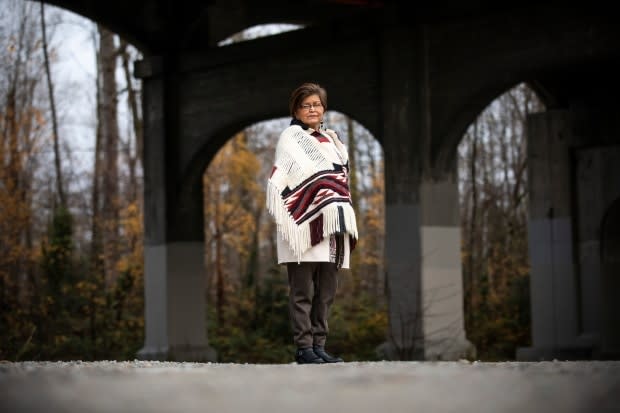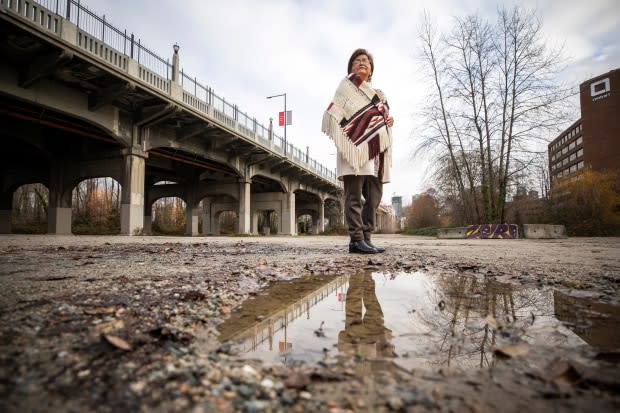'We deserve to benefit from this land': Squamish Nation votes for $3B housing project on its land
The Squamish Nation voted last night to proceed with the $3-billion Sen̓áḵw housing development project on Kitsilano reserve land in Vancouver, making it one of the biggest housing projects led by a First Nation in Canada.
The First Nation will partner with Westbank Development Corporation to build 11 towers and 6,000 rental housing units on a 4.7-hectare parcel of land in the Kitsilano area that the Squamish gained back in a land-claims agreement in 2000.
For the hereditary chief of Sen̓áḵw, it's a reckoning.
"It's a change for us, but we deserve it," said Chief Janice George. "We deserve to benefit from this land, just like everybody else in Vancouver."

The referendum was open to all Squamish Nation members and asked two main questions:
Whether members approved of three lots in Sen̓áḵw to be leased for 120 years.
Whether they were in favour of the proposed development to be undertaken jointly by the Squamish Nation and Westbank.
Both questions got the nod.
"Now we're going to build these mega buildings that will benefit Vancouver and our people," George said.
George admits community members have concerns about how money generated from the development will be spent and if this is the right investment for them.
Taylor George-Hollis, a Squamsh Nation youth, also heard fears from community members about the revenue-sharing agreement between a single corporation and a nation with almost 4,000 members.

Young people, however, feel the project is a good move toward independence, she said.
"We are seeking more, we're growing more as a community rather than seeking handouts from the government, and so I believe we are taking a step in the right direction," George-Hollis said.
The site of the Sen̓áḵw development is a former village site the federal government deemed reserve land in 1977.
That reserve, called Kitsilano Indian Reserve No. 6, is one of the few urban reserves in British Columbia. The land sits between Vanier Park and the old Molson Brewery on Burrard Street, and also under the south end of the Burrard Bridge.
For those interested in Indigenous urban planning, this project could set a precedent for other First Nations, but also for all city developers.
Ginger Gosnell-Myers is a fellow at the Morris J. Wosk Centre for Dialogue at Simon Fraser University, and specializes in decolonization and urban Indigenous planning.
"This project is thoughtful because it's addressing the need for rental housing to be available in a city that is desperate for it," Gosnell-Myers said.
"It's an exciting opportunity to not just make a lot of money really fast, but assert identity in a city that has pushed Indigenous peoples out historically," she added.


